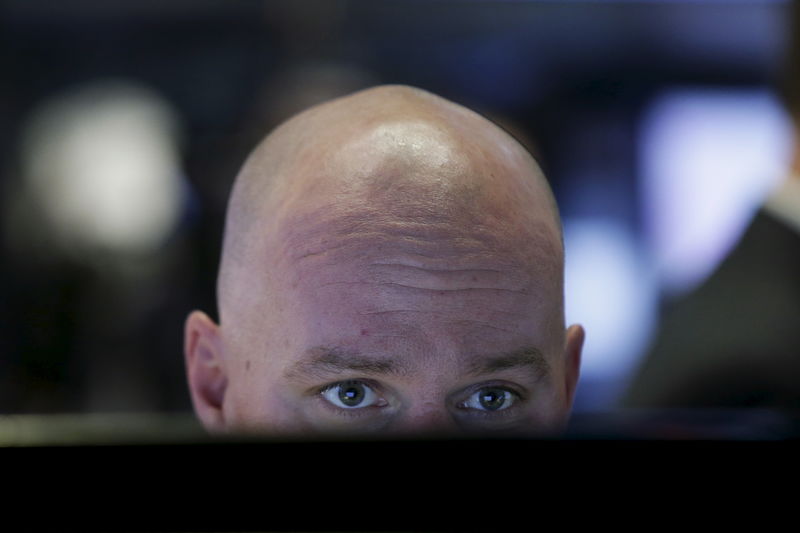The US monetary system is precariously positioned following the failures of Silvergate (NYSE: SI), Silicon Valley Financial institution (NASDAQ: SIVB) and Signature Financial institution (NASDAQ: SBNY).
Regulators have stepped in with emergency measures to include the fallout from uninsured deposit funding and unrealized losses throughout asset portfolios, together with the launch of the Financial institution Time period Funding Program (BTFP).
Are you in search of fast-news, hot-tips and market evaluation?
Signal-up for the Invezz e-newsletter, at this time.
Though the S&P 500 heading greater yesterday was a little bit of a shock, this was doubtless as a result of expectations that the Fed might shift to looser financial coverage, towards final week’s recommendations {that a} 50-bps fee hike was on the playing cards.
1. Deposits are flowing out of native and regional banks
Mixed, the closure of SVB and Signature has resulted in almost $265 bn in depositor cash being frozen by regulators.
PacWest (NASDAQ: PACW) too reported an outflow of $700mn late final week.
Led by deep losses in First Republic Financial institution (NYSE: FRC) on Monday, thirteenth of March, the KBW Nasdaq Financial institution Index plunged to an all-time low of 79.58.
Depositors, traders, and the monetary system at massive don’t seem satisfied with the Fed’s insistence that it’s prepared to handle any and all liquidity points to protect portfolios and banks from the opportunity of a widespread run on the system.
Anxiousness across the potential onset of contagion in regional banks and widespread monetary instability stays, regardless that the index improved on Tuesday, 14th of March, closing at 82.67.
Liz Hoffman, Semafor enterprise and finance editor believes that regulators are planning to ‘firehose’ depositors with cash, and remarked,
…(regulators are indicating that) we’re not going to cease this however we’re going to fund it.
2. Deposits are flowing into the majors
On account of the turmoil within the banking sector, households and companies are shifting no less than a portion of their belongings to the relative security of worldwide systemically vital banks (G – SIBs), reminiscent of JP Morgan (NYSE: JPM), Financial institution of America (NYSE: BAC), and Citi (NYSE: C).
Bloomberg reported that Financial institution of America noticed huge inflows of greater than $15 bn in new deposits over a really compressed interval, whereas insiders report that different majors are additionally seeing surging deposit inflows which can be properly above weekly averages.
This shift is being pushed by the too-big-to-fail status of those establishments mixed with the restricted uptake of the Fed’s facility that permits banks to take one-year loans towards unrealized losses.
3. Unrealized losses within the banking sector prime $600 bn
A number of banks, together with SVB, had parked the majority of extra deposits acquired throughout the pandemic within the relative security of 10-year treasuries.
Nevertheless, with the slowdown within the tech sector, failing startups and the sharp rise in bond yields from beneath 1% in 2020, to three.67% at this time, many such establishments amassed deep losses of their asset portfolios.
As per information from the Federal Deposit Insurance coverage Company (FDIC), collective unrealized losses on funding securities for the banking sector stand at an alarming $620 bn.

This means that within the occasion of a liquidity crunch, banks can be unable to monetize their holdings to satisfy their obligations.
Fearing a repeat of financial institution failures final week, depositors are withdrawing their holdings en masse from establishments that may very well be at excessive threat of contagion, additional exacerbating monetary situations.
4. Interbank lending troubles
The FRA-OIS unfold is an indicator of the well being of the interbank lending market.
Basically, it compares the hole between three-month ahead charges of financial institution borrowing versus the in a single day or present fee.
Ideally, the unfold must be fairly small, which might point out confidence within the banking entity.
On Wednesday, eighth March, the FRA-OIS unfold stood at a subdued 3.10, earlier than rising to eight.20 on Friday, the tenth of March.
On Monday, it sky-rocketed to a mind-boggling 59.80, surging to its highest ranges because the fall of Lehman Brothers (excluding the covid period) and rung alarm bells of liquidity drying up as banks feared lending to 1 one other.
This implied that the banks themselves weren’t happy by the intervention of regulators to guard depositor worth, and suspect deeper points inside interbank lending.

Thankfully, very like equities, the unfold did see some aid on Tuesday, 14th March moderating to 33.90 at shut, corresponding to October 2022 ranges.
Optimistically, that is properly beneath the GFC ranges which have been approaching 200.
Nevertheless, Steven van Metre, CFP, who’s an insurance coverage dealer and Funding Advisory Consultant of Atlas Monetary Advisors, Inc, warned,
.…we’re seeing a surge in cash nonetheless flowing out of the regional banks…and what I wish to recommend to you is that is going to proceed. This isn’t only a one or two-day concern.
5. Downgrades coming?
Moody’s echoed this view and positioned a number of well-known banks beneath overview for potential downgrades, together with Comerica Inc., Intrust Monetary Corp., and Western Alliance.
In a report, the score company famous,
We count on pressures to persist and be exacerbated by ongoing financial coverage tightening…
6. Native and Regional banks set to extend their borrowing
As mentioned above, FDIC-insured banks are, or might quickly be in dire straits as a result of sheer quantity of unrealized losses.
This prevents financial institution management from effectively elevating funds once they want it most, threatening buyer confidence.
In a robust indication that the state of regional banks is about to deteriorate additional, Van Metre notes that the Federal Dwelling Mortgage Banks (FHLB) system raised a large $88.7 bn in short-term debt to cowl extra funding demand, as extra depositors and startup traders look to withdraw their capital.
Relating to the Fed’s upcoming fee choice, Padhraic Garvey, CFA; Benjamin Schroeder and Antoine Bouvet at ING famous,
…No want for a hike proper now if the weak system is exhibiting vulnerability.
In worldwide banking information, buying and selling in Credit score Suisse shares was suspended after costs crashed by 24% earlier at this time, hitting an all-time low for a second consecutive day. An in depth article on the most recent developments is on the market right here.



















